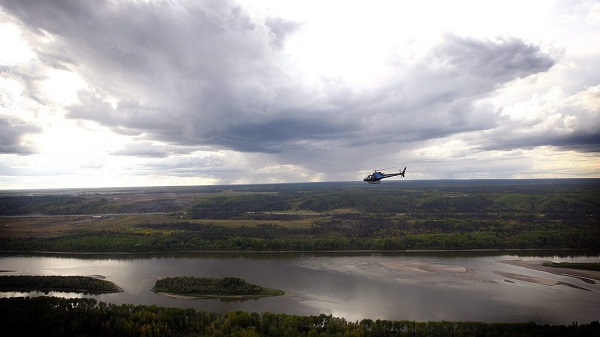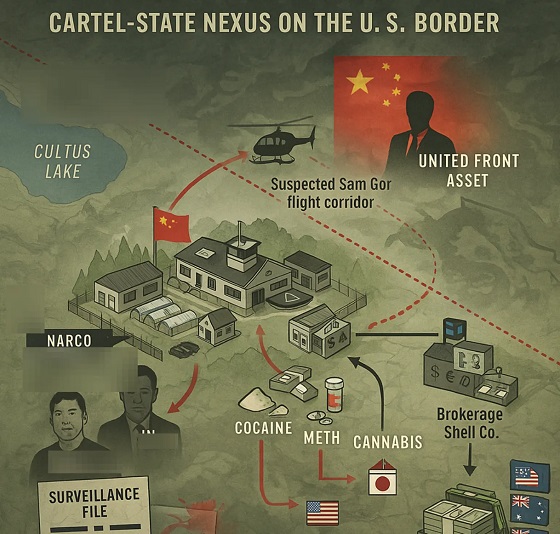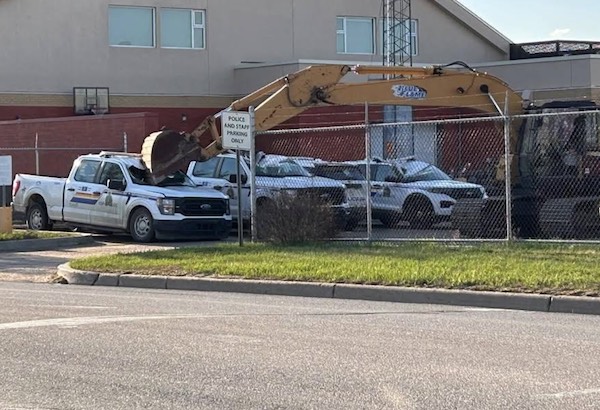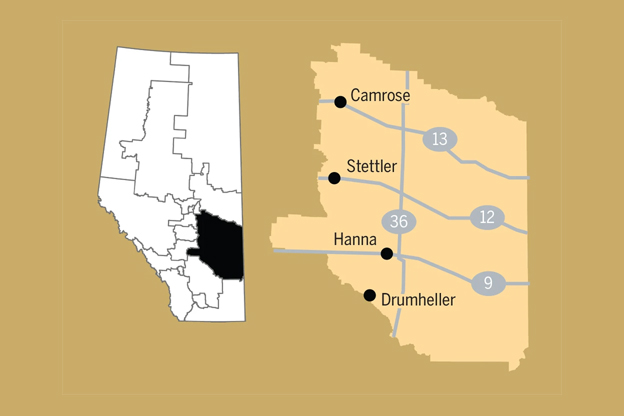Alberta
Sun setting on AHS as first of four provincial health agencies, Primary Care Alberta set to launch

Primary Care Alberta, the new provincial health agency overseeing and coordinating the delivery of primary health care services, will become operational later this fall.
Alberta’s government is taking action to refocus the health care system so that every Albertan has access to a primary health care provider and timely, high-quality primary health care, no matter where they live.
Alberta’s new primary care provincial health agency, Primary Care Alberta, will create a modern, more responsive and unified health care system that prioritizes patients, empowers front-line health care professionals and helps reduce pressures on the entire health system.
The immediate priority of Primary Care Alberta is to ensure every Albertan has access to high-quality primary care services in all areas of the province, so all Albertans and their families are supported in their day-to-day health needs through every stage of life. The new primary care agency will focus on supporting integrated teams of family physicians, nurse practitioners and pharmacists to provide patients with the best care possible.
“Standing up Primary Care Alberta is an important milestone in refocusing the health care system to put patients first and give our front-line experts the support they need to ensure Albertans are receiving the care they deserve.”
Kim Simmonds, the current assistant deputy minister of strategic planning and performance at Alberta Health, will be appointed as chief executive officer of Primary Care Alberta. Simmonds brings a wealth of public and private sector experience to the role and has extensive experience working with stakeholders across the health care system. She has experience working with clinicians and understands the need for data and evidence-based decision-making when it comes to delivering primary care services to Albertans, no matter where they live.
“If primary care is to be the foundation on which the entire health system stands, every Albertan must have an ongoing connection and trusting relationship with a family doctor or health care team. They must belong to a health home where they are known and where they don’t have to tell their health story over and over again. There is much work to do in Alberta to achieve these goals, and I’m eager to get going to help make it happen.”
Modernizing Alberta’s Primary Care System (MAPS)
In 2022, the Modernizing Alberta’s Primary Care System (MAPS) initiative was launched to recommend ways to strengthen Alberta’s primary health care system. Alberta’s government undertook extensive engagement with its primary care providers and stakeholders to develop a guide to strengthen primary health care in Alberta. The MAPS final report recommended creating a single governance structure that supports an integrated team of health care professionals with data sharing within and across sectors.
Improving the coordination and delivery of primary care was also something Alberta’s government heard during provincewide engagement sessions held earlier this year as part of efforts to engage with Albertans and health care professionals on how to refocus the health care system. This made-in-Alberta solution is the first of its kind to be established in a provincial health care system. The agency is a dedicated organization to support governance, oversight, delivery, operation and coordination, a significant step being taken to improve the quality of health care delivery in the province.
Quick facts
- The Provincial Health Agencies Act enables the transition from one regional health authority, Alberta Health Services (AHS), to an integrated system of four sector-based provincial health agencies: primary care, acute care, continuing care, and mental health and addiction.
- The agencies will be responsible for delivering integrated health services, ensuring Albertans receive timely access to care regardless of where they live.
- Some of Primary Care Alberta’s longer-term priorities include:
- Engaging physicians and providing leadership opportunities to lead their peers through the change process.
- Incentivizing care models that improve health outcomes and patient experience.
- Providing tools to primary care providers, such as enhancing the current Find a Doctor website and e-Referral, that benefit both providers and patients.
- Setting standards for primary care so Albertans have consistent services.
- Funding primary care networks that bring practitioners together to implement provincial initiatives and address regional needs.
- Developing chronic disease care models to reduce the burden of chronic disease on patients and the health care system.
- More than 30,000 Albertans have had the opportunity to share their thoughts and ideas directly on the refocusing through in-person engagement sessions, online feedback forms and telephone townhalls.
- In addition to public engagement sessions, dedicated engagements were held with Indigenous communities, the francophone community and other key health partners.
Related information
Alberta
Charges laid in record cocaine seizure

From ALERT – The Alberta Law Enforcement Response Team
Five suspects have now been charged in relation to a major cocaine seizure that took place in Edmonton last year. In April 2024 $3 million worth of cocaine and other drugs was seized.
ALERT Edmonton’s organized crime team, in consultation with Alberta Crown Prosecution Service, was able to arrest and lay charges against five suspects on April 21, 2025. The charges are wide-ranging and include participation in the activities of a criminal organization, conspiracy to traffic drugs, drug trafficking, and money laundering.
“Following last year’s drug seizure, our investigative team was able to conduct a thorough investigation and identify the suspects responsible. We now have significant charges put before the courts in the hopes of holding this organized crime group accountable,” said Insp. Angela Kemp, ALERT Edmonton.
The drug seizure was initially announced by ALERT on May 6, 2024. At 27 kilograms of cocaine, it was highlighted as the largest cocaine seizure by ALERT in Edmonton.
The seizure took place on April 30, 2024 when a search warrant was executed at a west Edmonton home in the Lewis Estates neighbourhood.
ALERT alleges that the suspects are part of an organized crime group that was involved in drug trafficking in the Edmonton region, and had also supplied drugs to Grande Prairie and Saskatchewan. ALERT received assistance on the investigation by the Edmonton Police Service and RCMP Federal Policing Northwest Region.
The following suspects were charged:
- Jeffrey Vil, a 45-year-old from Edmonton, is charged with participation in activities of a criminal organization, commission of an offence for a criminal organization, conspiracy to traffic drugs, conspiracy to possess drugs for the purpose of trafficking, possession of drugs for the purpose of trafficking, laundering proceeds of crime, possession of proceeds of crime, and possession of a prohibited device.
- Tommy Szeto, a 35-year-old from Edmonton, is charged with participation in activities of a criminal organization, commission of an offence for a criminal organization, conspiracy to traffic drugs, conspiracy to possess drugs for the purpose of trafficking, possession of drugs for the purpose of trafficking, and laundering proceeds of crime.
- Tayler Fraser, a 27-year-old from Edmonton, is charged with is charged with participation in activities of a criminal organization, commission of an offence for a criminal organization, conspiracy to traffic drugs, and conspiracy to possess drugs for the purpose of trafficking.
- Christian Barwise, a 35-year-old from Edmonton, is charged with drug trafficking.
- Adrian De Guzman, a 27-year-old from Edmonton, is charged with drug trafficking.
The suspects were released from custody and are scheduled to appear in court on May 22, 2025.
Members of the public who suspect drug or gang activity in their community can call local police, or contact Crime Stoppers at 1-800-222-TIPS (8477). Crime Stoppers is always anonymous.
ALERT was established and is funded by the Alberta Government and is a compilation of the province’s most sophisticated law enforcement resources committed to tackling serious and organized crime.
Alberta
Energy projects occupy less than three per cent of Alberta’s oil sands region, report says

From the Canadian Energy Centre
By Will Gibson
‘Much of the habitat across the region is in good condition’
The footprint of energy development continues to occupy less than three per cent of Alberta’s oil sands region, according to a report by the Alberta Biodiversity Monitoring Institute (ABMI).
As of 2021, energy projects impacted just 2.6 per cent of the oil sands region, which encompasses about 142,000 square kilometers of boreal forest in northern Alberta, an area nearly the size of Montana.
“There’s a mistaken perception that the oil sands region is one big strip mine and that’s simply not the case,” said David Roberts, director of the institute’s science centre.
“The energy footprint is very small in total area once you zoom out to the boreal forest surrounding this development.”

Between 2000 and 2021, the total human footprint in the oil sands region (including energy, agriculture, forestry and municipal uses) increased from 12.0 to 16.5 per cent.
At the same time, energy footprint increased from 1.4 to 2.6 per cent – all while oil sands production surged from 667,000 to 3.3 million barrels per day, according to the Alberta Energy Regulator.
The ABMI’s report is based on data from 328 monitoring sites across the Athabasca, Cold Lake and Peace River oil sands regions. Much of the region’s oil and gas development is concentrated in a 4,800-square-kilometre zone north of Fort McMurray.
“In general, the effects of energy footprint on habitat suitability at the regional scale were small…for most species because energy footprint occupies a small total area in the oil sands region,” the report says.
Researchers recorded species that were present and measured a variety of habitat characteristics.

The status and trend of human footprint and habitat were monitored using fine-resolution imagery, light detection and ranging data as well as satellite images.
This data was used to identify relationships between human land use, habitat and population of species.
The report found that as of 2021, about 95 per cent of native aquatic and wetland habitat in the region was undisturbed while about 77 per cent of terrestrial habitat was undisturbed.
Researchers measured the intactness of the region’s 719 plant, insect and animal species at 87 per cent, which the report states “means much of the habitat across the region is in good condition.”
While the overall picture is positive, Roberts said the report highlights the need for ongoing attention to vegetation regeneration on seismic lines along with the management of impacts to species such as Woodland Caribou.

The ABMI has partnered with Indigenous communities in the region to monitor species of cultural importance. This includes a project with the Lakeland Métis Nation on a study tracking moose occupancy around in situ oil sands operations in traditional hunting areas.
“This study combines traditional Métis insights from knowledge holders with western scientific methods for data collection and analysis,” Roberts said.
The institute also works with oil sands companies, a relationship that Roberts sees as having real value.
“When you are trying to look at the impacts of industrial operations and trends in industry, not having those people at the table means you are blind and don’t have all the information,” Roberts says.
The report was commissioned by Canada’s Oil Sands Innovation Alliance, the research arm of Pathways Alliance, a consortium of the six largest oil sands producers.
“We tried to look around when we were asked to put together this report to see if there was a template but there was nothing, at least nothing from a jurisdiction with significant oil and gas activity,” Roberts said.
“There’s a remarkable level of analysis because of how much data we were able to gather.”
-

 Crime1 day ago
Crime1 day agoInside B.C.’s Cultus Lake Narco Corridor — How Chinese State-Linked Syndicates are Building a Narco Empire in Canada
-

 Alberta2 days ago
Alberta2 days agoSaudi oil pivot could shake global markets and hit Alberta hard
-

 Agriculture2 days ago
Agriculture2 days agoCanada is missing out on the global milk boom
-

 Business1 day ago
Business1 day agoTop business group warns Carney’s ‘net zero’ push spells disaster for Canada’s economy
-

 Daily Caller22 hours ago
Daily Caller22 hours agoMisguided Climate Policies Create ‘Real Energy Emergency’ And Permit China To Dominate US
-

 Alberta20 hours ago
Alberta20 hours agoBonnyville RCMP targeted by suspect driving a trackhoe – Update
-

 Business1 day ago
Business1 day agoTrump praises Carney at White House, says ‘never say never’ about 51st state
-

 International1 day ago
International1 day agoTrump DOJ investigating Washington for new law forcing priests to break Seal of Confession


